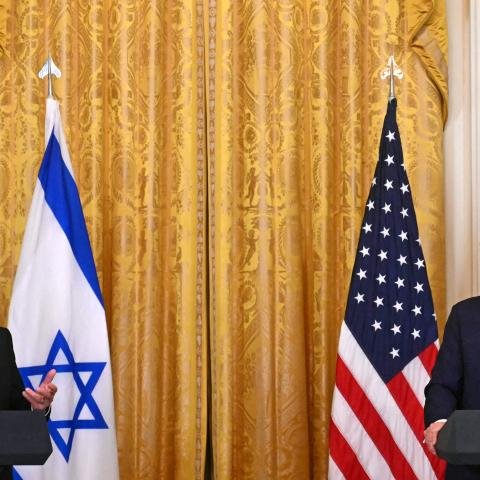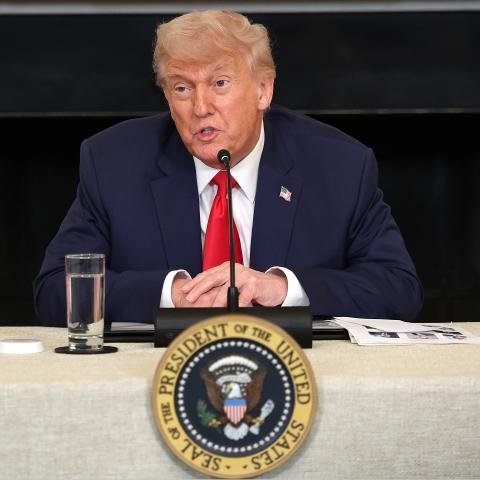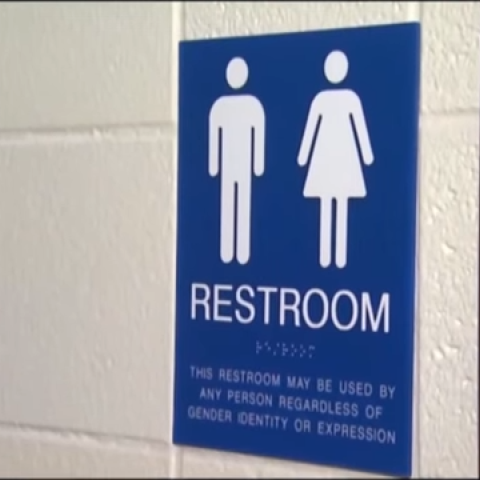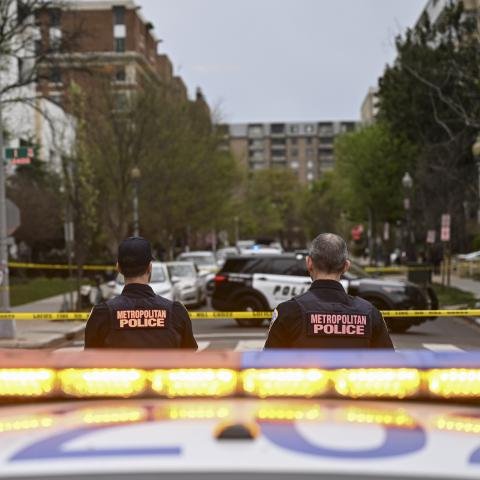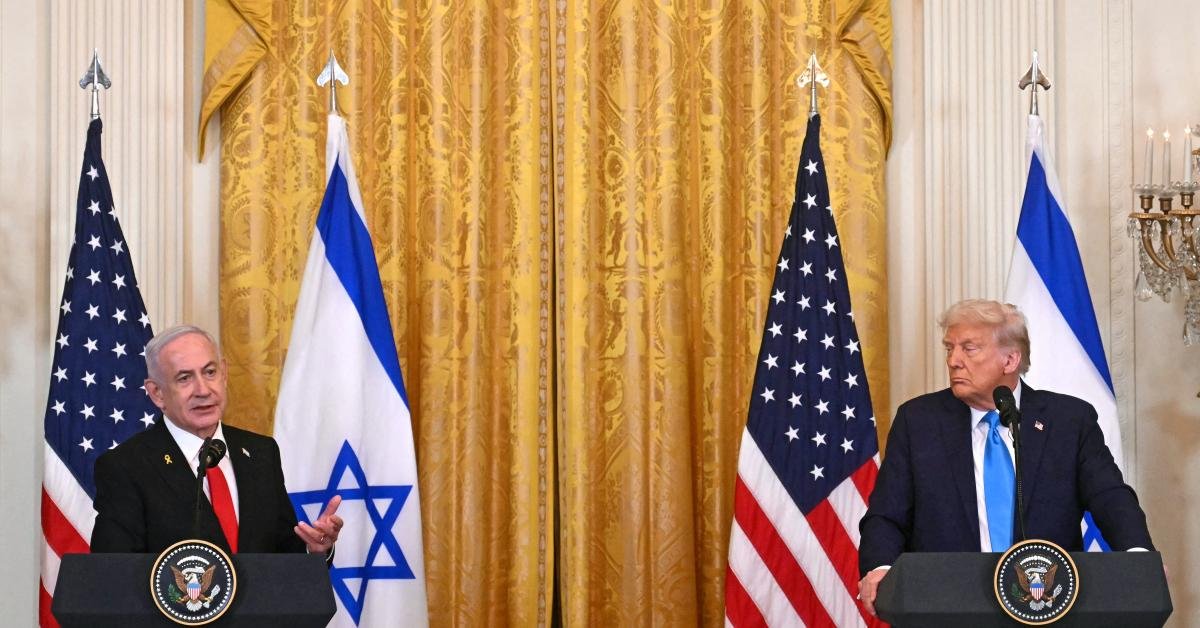
President Trump has made significant progress in reshaping the Middle East according to the vision he laid out early in his second term by putting Iran’s nuclear program in a box and working to facilitate peace between Israel and its neighbors.
The region was a tinderbox when the president took office for a second term in January as war raged between Israel and various Iranian proxies or supported groups, from the Houthis in Yemen to Hamas in Gaza. Just months earlier, the Islamic theocracy ruling Iran had even launched its first direct attacks against Israel.
Trump returned to office promising a shift in U.S. policy—to undermine Iran’s ability to fuel regional violence, an end to the regime’s nuclear program, and a return to the peace frameworks first established during his first term to normalize relations between Israel and its neighbors—all while avoiding costly U.S. entanglements
Nuclear weapons are the bright red line
Now, just five full months into his term, the President has achieved key parts of his vision for the region and dealt major blows to the twin pillars of Iran’s bid for regional supremacy—its illicit nuclear program and foreign proxies.
The Iranian regime’s nuclear weapons program has been a thorn in the side of successive U.S. administrations since the first stages of development began covertly in the 1990s. The Trump administration in particular viewed Iran’s aim to possess a nuclear weapon as a bright red line, given the regime’s long-time hostility to America.
Indeed, Iran has long positioned itself as an enemy of the United States, beginning with the foundation of the Islamic regime in the 1979 revolution that overthrew Shah Pahlavi, the U.S.-backed ruler. In the midst of the revolution, radicals backed by the regime took dozens of American embassy staffers hostage in 1979 and held them for 444 days. Iran-backed terror groups were also behind two deadly attacks, the 1983 bombing of the U.S. Marine barracks in Beirut, Lebanon and 1996 bombing of the Khobar Towers in Saudi Arabia, which collectively killed over 250 U.S. service members.
The Iranian Revolutionary Guard Corps played a role in fueling the insurgency against U.S. forces occupying Iraq, leading to the death of more than 600 U.S. service members, according to a previously classified Pentagon assessment.
From the earliest days of his new administration, Trump made clear that he intended to return to the signature policies of his first administration, signing an executive order directing the government to apply “maximum pressure” to the government of Iran to hamper its nuclear program, starve it of oil revenues, and disrupt funding to its proxy network.
Iran refuses to come to the table
The policy laid out by that order culminated in the strike against three Iranian nuclear sites last week after months of failed negotiations with the regime. Dr. Walid Phares, an author and expert on the Iranian regime, told Just the News that the president viewed the strikes as necessary to adhere to his bright red line of no nuclear weapons.
“President Trump is different. He would like to make sure that any deal that will be done, if it’s possible—I’m not sure that is possible—but if there will be another deal, another negotiation, the regime will not have any program, will not be the one to decide on, you know, shrinking it or developing it—the program has to be dismantled,” Phares told the John Solomon Reports podcast on Monday.
“And since the regime has been, for 60 days, offered by President Trump, not willing to come to the table, not willing to offer to shrink it, not making statements in that direction…President Trump and his team decided to take it out,” he continued. “And obviously, from an objective perspective, not for or against the administration, those strikes not just were successful, but broke the backbone of the regime’s nuclear program.”
Damage assessments from U.S. and Israeli intelligence agencies suggest that the regime’s nuclear program has been severely damaged, though questions remain about how long it would take the country to rebuild its capabilities and whether any of its enriched uranium was spared in the bombardment.
Yet, Phares said it is likely that the strikes will keep Iran from rebuilding its nuclear program in the future, especially since the United States has demonstrated its ability to strike targets inside the country.
“The fact that Israel and the United States have demonstrated that they can strike again—they did the most difficult ones,” Phares said. “If, let’s suppose, the regime regathers some of the infrastructure and products in a location anywhere in Iran, Israelis, first, Americans, second, will be able to take it out.”
Hezbollah and Hamas severely crippled by Trump and Netanyahu
President Trump and long-time U.S. ally Israel have also dealt major blows to Iran’s network of proxies across the region, weakening the second pillar of the regime’s power. Israel has decimated Lebanese Hezbollah and Hamas in Gaza, depriving Iran of two key proxies that served as a proverbial knife at Jerusalem’s throat in any potential conflict with Iran.
Trump took on the Iran-backed Houthis in Yemen, who were threatening commercial shipping traffic and military vessels transiting the Bab al-Mandab strait to and from the Red Sea, and by extension, the strategically important Suez Canal. In March, Trump ordered several bombing campaigns against the Houthis. The strikes forced the group into a ceasefire deal. Since then, commercial traffic in the straight has increased by 60% from lows last year, according to European officials.
Several of Israel’s neighbors are also reportedly in negotiations to sign normalization agreements with the Jewish state by joining Trump’s signature Abraham Accords. These include both Syria and Lebanon, previously home to powerful Iran-backed forces or allied governments.
Hezbollah remained a powerful force in Lebanon until it was severely weakened last year by Israeli military attacks, one of which killed the group’s longtime leader. The group was forced into a ceasefire and has retreated away from the Israeli border.
Exploiting Hezbollah’s weakness, Syrian opposition groups rapidly advanced on the capital, Damascus, and overthrew the reigning dictator, Bashar al-Assad—another close ally of Iran that used the regime’s support, both directly and through Hezbollah, to stay in power. Despite a rocky start in its relationship with Israel, the new government is currently holding talks with its U.S.-backed neighbor to normalize relations and end any hostilities between them.
In an effort to bolster the nascent government and help facilitate those talks, the Trump administration officially lifted Assad-era sanctions on the country on Tuesday and has used its diplomatic clout to help garner limited recognition for the new authorities.
Expanding the historic Abraham Accords
Israeli officials confirmed this week that talks were ongoing and highlighted their interest in expanding the Abraham Accords to include its Arab neighbors.
“Israel is interested in expanding the Abraham Accords circle of peace and normalization,” Israel’s foreign minister, Gideon Sa’ar said at a press conference Monday. “We have an interest in adding countries, such as Syria and Lebanon, our neighbors, to the circle of peace and normalization—while safeguarding Israel’s essential and security interests.”
Proving more elusive is normalization between Israel and the leading Arab state, Saudi Arabia. Trump aimed to bring the influential Gulf monarchy into the Abraham Accords during his first term, but left office before securing a deal. Complicating the equation is that Saudi Arabia has long tied recognition of the Jewish state to the establishment of a Palestinian state in lands currently occupied by Israel.
Israel’s ongoing war against the Hamas terrorist group, which is primarily concentrated in the so-called Palestinian territory of Gaza, makes near-term recognition of a Palestinian state a difficult proposition.
That has not stopped Trump from placing resolving the conflict at the top of his priority list. He plans to address possible solutions with Israeli Prime Minister Benjamin Netanyahu when the pair meet in Washington next week. He has remained focused on securing the release of hostages still held by Hamas and ending the fighting between the two sides. Israel has been reluctant to end its attacks, citing the threat posed by the terrorist group, and vowing to only end the war when Hamas is dismantled.
On Tuesday, Trump said that his negotiators had come to an agreement with the Israelis on conditions for a ceasefire, but Hamas’ approval remains outstanding.
“My Representatives had a long and productive meeting with the Israelis today on Gaza. Israel has agreed to the necessary conditions to finalize the 60 Day CEASEFIRE, during which time we will work with all parties to end the War. The Qataris and Egyptians, who have worked very hard to help bring Peace, will deliver this final proposal,” Trump said in a post to Truth Social. “I hope, for the good of the Middle East, that Hamas takes this Deal, because it will not get better — IT WILL ONLY GET WORSE.”

